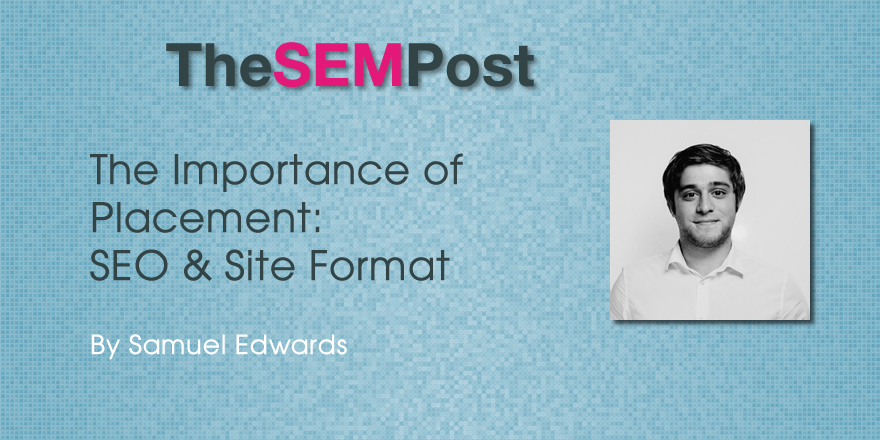 When discussing SEO, the emphasis tends to be on explicit content. As such, those who create web content tend to focus on a few key issues: keywords, original content, and quality links that reflect well and boost search results. However, there are a number of commonly overlooked features that influence the effectiveness of SEO. One of these factors is placement. Where content exists on a page can be almost as important as what the content says. Ignoring placement can spell disaster for marketers.
When discussing SEO, the emphasis tends to be on explicit content. As such, those who create web content tend to focus on a few key issues: keywords, original content, and quality links that reflect well and boost search results. However, there are a number of commonly overlooked features that influence the effectiveness of SEO. One of these factors is placement. Where content exists on a page can be almost as important as what the content says. Ignoring placement can spell disaster for marketers.
Understanding The Fold
Back when most people read newspapers like the New York Times on actual paper, you knew content was more important when it was printed “above the fold.” Now that we do most of our reading on screens, however, there is no fold – at least not literally. But even though there is no physically tangible fold, readers still act like it exists.
If you want readers to pay attention to something, you should still place it above the digital fold. This basically means that for readers to find the content, they don’t need to scroll to a new part of the page. The fold is wherever your standard page view ends within the browser. Readers working at desktops tend to remain above this fold when looking for what’s important.
If you’re creating a mobile site, it can obviously be harder to place your content above the fold, as the screen size is highly limited. Luckily, users have learned that very little makes the cut if they read without scrolling on their small screens, so content can fall outside the fold in that sense. Readers have also conditioned themselves to scroll, although not always attentively, on mobile devices, while they skim and close browser windows.
Prioritizing Keyword Position
Although SEO experts will always remind you that interesting content generally trumps keyword density in the ratings systems, this doesn’t make an emphasis on keywords completely void. One way in which this is the case is related to placement: your keyword should appear within the first hundred words. If your keyword doesn’t appear until outside that magic number, it begins to seem less important.
Similarly, keywords should be positioned in the website description tag and in the title tag. This is all of the information that search engines sort through first when determining rankings. You don’t need your site keyword to appear dozens of times, but it does need to appear in the right places.
Placement And User Experience
Finally, placing valuable content at the beginning of the page and in key tags can help to improve your user experience ratings, another important factor in SEO. When keywords appear towards the beginning of a page, it helps to guide the reader through the content. Easily understandable and intuitively organized content relies on good content placement. Users can only engage with a website when that website presents itself in a way amenable to their prior knowledge and web usage patterns.
The Worth Of A Picture
Text heavy websites often place photos alongside their articles, and with the right supplementary content this can be highly beneficial. However, when we remember what it means to place important content above the fold, pictures become risky business. After all, if a picture is worth a thousand words, a picture that doesn’t immediately engage readers (and let’s be honest, that’s a lot of stock photos), can be a barrier to readers seeing any actual content.
With this in mind, it’s important to weigh how compelling your image is when deciding where to place it. Will it help to engage readers further with the text immediately below it and encourage them to read more? Or will it cause them to assume nothing interesting will follow? If you think it’s risky, place the photo below the fold and let your content lead.
SEO is a constantly evolving set of rules and norms, but these rules look at the big picture – at everything on a particular page. The reality is that many of your page views never make it below the frame of the browser. If your content is going to be successful, you need to leverage this space above the fold.
[…] The Importance Of Placement: SEO And Site Format, thesempost.com […]